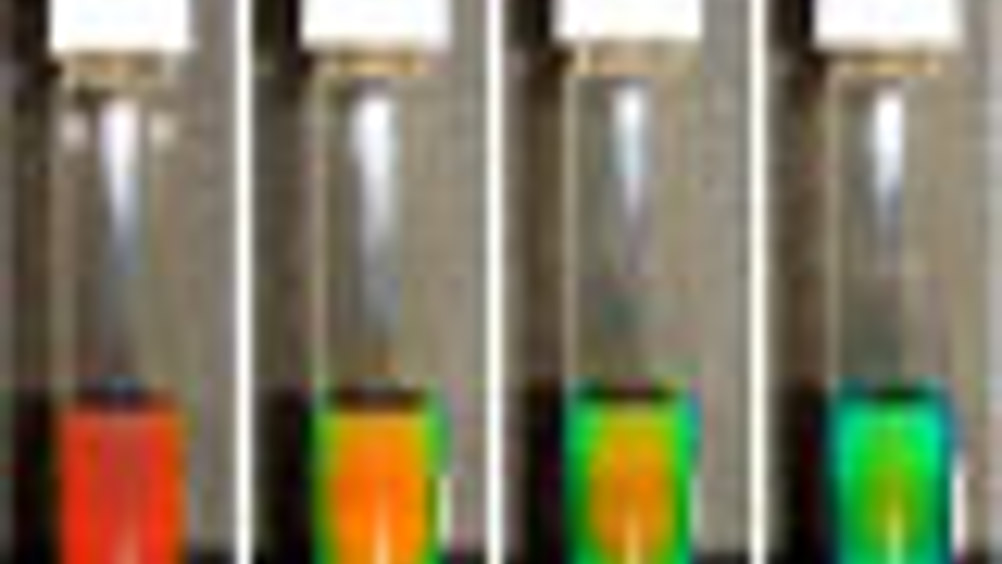Photonic crystals show brilliant colours
Nanotechnologists in the US have shown that they can control the colour of small particles of iron oxide suspended in water by applying an external magnetic field to the solution.

Nanotechnologists at the
have shown that they can control the colour of small particles of iron oxide suspended in water by applying an external magnetic field to the solution.
The discovery has potential to improve the quality and size of electronic display screens and to enable the manufacture of products such as erasable and rewritable electronic paper and ink that can change colour electromagnetically.
Researchers found that changing the strength of the magnetic field altered the arrangement of the spherical iron oxide particles in solution. In doing so they modified how light falling on the particles passes through or is deflected by the solution and changed the colour of the iron oxide solution.
‘The key is to design the structure of iron oxide nanoparticles through chemical synthesis so that these nanoparticles self-assemble into three-dimensionally ordered colloidal crystals in a magnetic field,’ said Yadong Yin, who led the research. ‘By reflecting light, these photonic crystals show brilliant colours.’
Register now to continue reading
Thanks for visiting The Engineer. You’ve now reached your monthly limit of news stories. Register for free to unlock unlimited access to all of our news coverage, as well as premium content including opinion, in-depth features and special reports.
Benefits of registering
-
In-depth insights and coverage of key emerging trends
-
Unrestricted access to special reports throughout the year
-
Daily technology news delivered straight to your inbox










BEAS funding available to help businesses cut energy costs
And not a moment too soon, if the following exchange broadcast last Friday 13th June, on the Radio 4 ´Rare Earth´ program (link below, ~ 17 minutes...